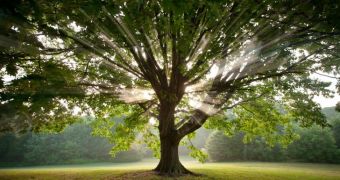A recent report pieced together by researchers with the United States Forest Service and published in the journal Environmental Pollution has high chances to turn everybody who values their life and their health into tree huggers.
Thus, the report in question says that, each and every year, trees in the United States deliver health benefits worth a whopping $7 billion (approximately €5.21 billion), Click Green informs.
According to the Forest Service specialists who conducted this investigation, these health benefits include preventing an impressive 670,000 cases of acute respiratory symptoms and 850 deaths annually.
As part of this research project, Forest Service scientists and their colleagues looked at how trees in both urban and rural areas influence air concentrations of four pollutants, i.e. nitrogen dioxide, ozone, sulfur dioxide, and fine particulate matter.
These fours pollutants have been documented to take their toll on the pulmonary, the cardiac, the vascular, or the neurological system. Hence, the country's Environmental Protection Agency has established standards for each of them.
What's interesting is that, by the looks of it, trees in urban areas influence public health differently than those in rural areas. This is despite that, regardless of their location, trees help improve on local air quality by removing said pollutants from the environment.
More precisely, evidence indicates that, although they usually remove fewer pollutants than trees in rural regions, the ones in urban areas benefit public health in their proximity to a greater extent. It is believed that this is simply due to the fact that they are closer to people.
“In terms of impacts on human health, trees in urban areas are substantially more important than rural trees due to their proximity to people,” specialist Dave Nowak with the Forest Service's Northern Research Station explains in a statement.
“With more than 80 percent of Americans living in urban area, this research underscores how truly essential urban forests are to people across the nation,” adds Michael T. Rains, director of the Forest Service’s Northern Research Station and the Forest Products Laboratory.
Furthermore, “Information and tools developed by Forest Service research are contributing to communities valuing and managing the 138 million acres of trees and forests that grace the nation’s cities, towns and communities.”
It is estimated that, for the time being, trees cover approximately 34.2% of the United States’ overall territory. The problem is that, whereas some areas such as New Hampshire have a tree cover of about 90%, others such as North Dakota have trees growing on under 3% of their overall area.

 14 DAY TRIAL //
14 DAY TRIAL //